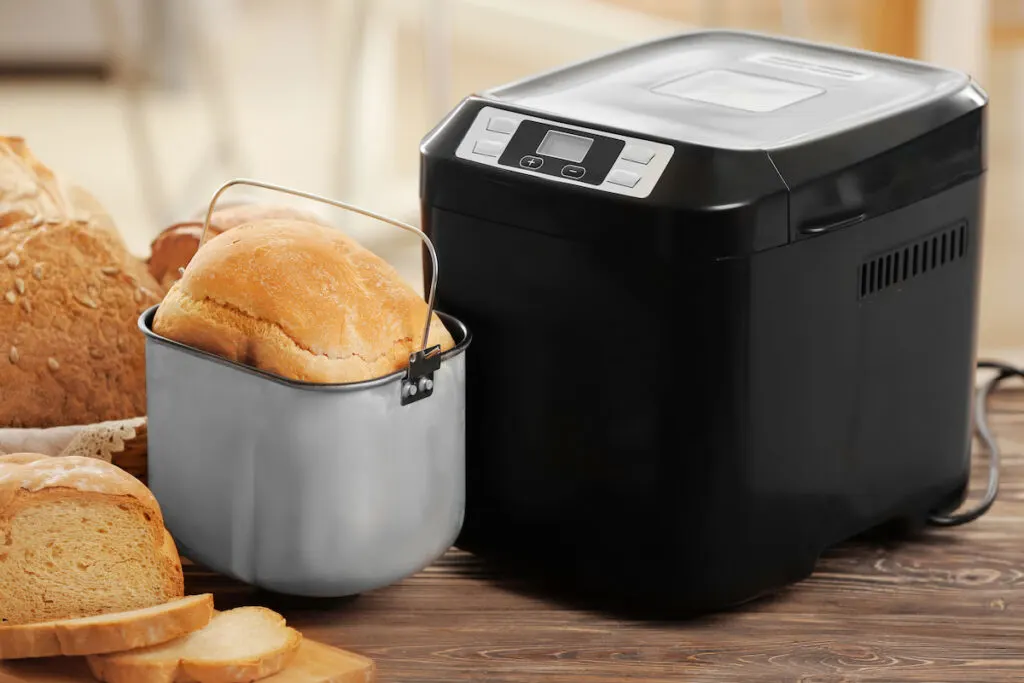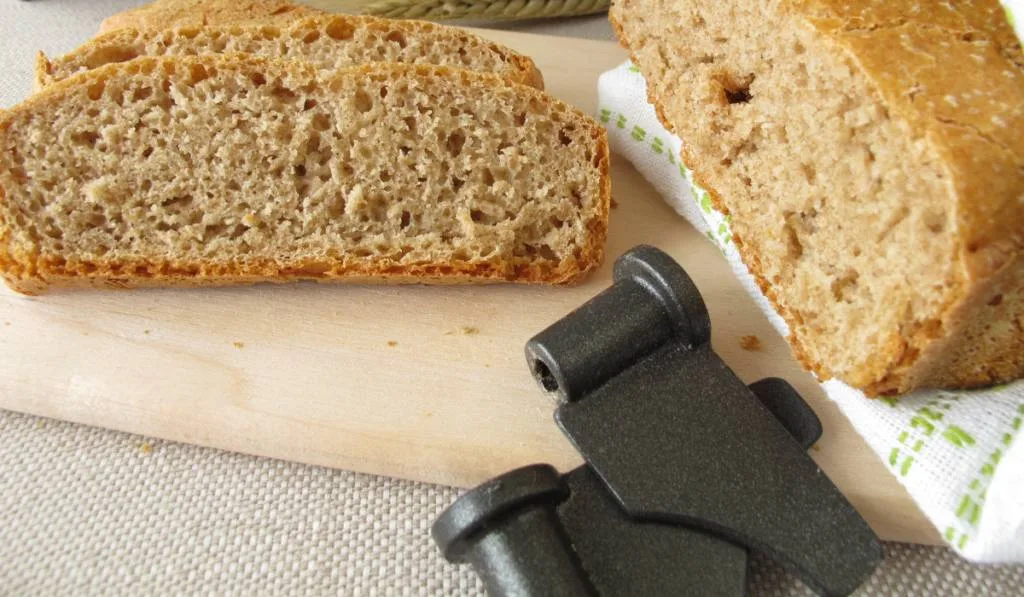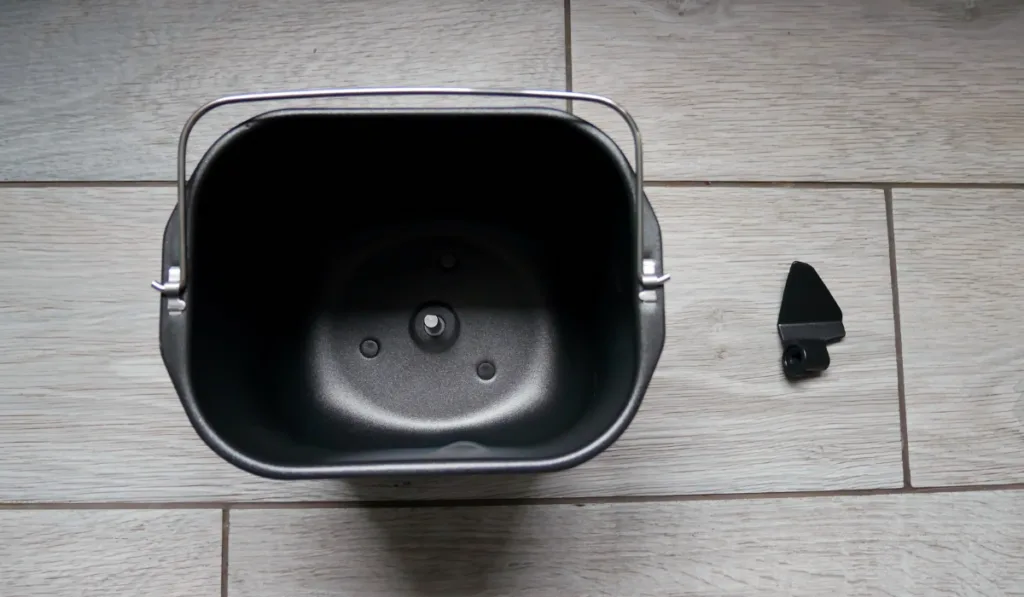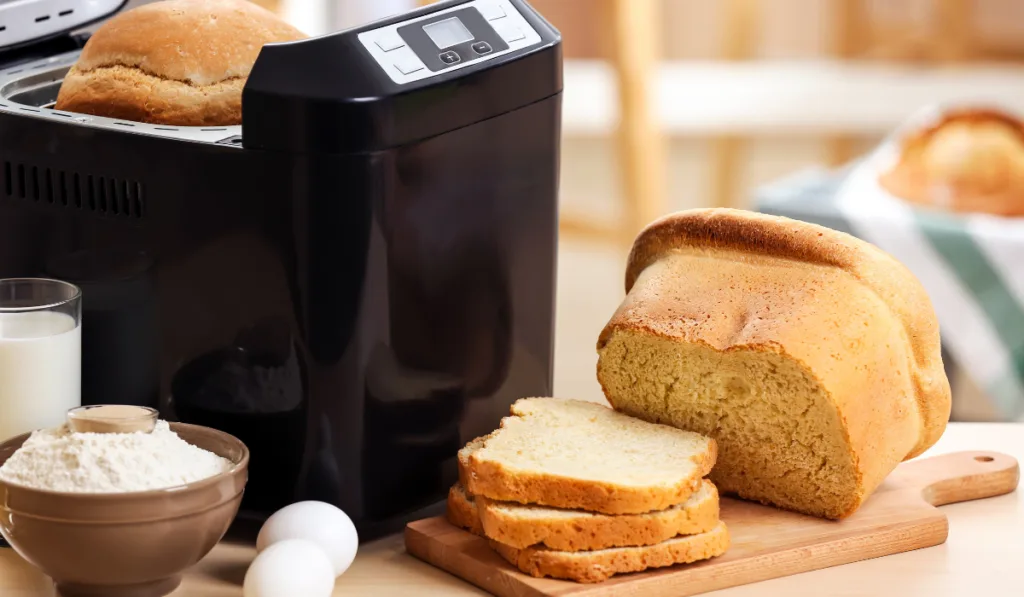Freshly home-baked bread will always have an edge over store-bought loaves.
Fortunately, bread machines have made it easy to bake flavor-packed loaves at home with minimal effort.
The irony is that the same thing that has brought huge convenience to bread lovers is also the source of major dissatisfaction — talk of a love-hate relationship with the bread machine paddle.
Luckily, all hope is not lost! You can still bake loaves that are as beautiful as they taste after you have mastered how to remove the bread machine paddle.
Read on to find out how.

Nothing beats having a slice of fresh, home-baked bread.
Equally as fulfilling is the whole process of making bread by hand.
Not only is kneading the dough therapeutic, but it is also fascinating to watch basic ingredients transform into something different and beautiful.
Unfortunately, you do not always have the time to make your bread by hand, which calls for the convenience of a bread maker.
With bread machines, you are only a few bread ingredients, buttons, and hours away from the glorious smell of freshly baked bread.
Good as they may be, bread machines have a downside — the paddle holes at the bottom of your bread.
The paddle is a pet peeve for most if not all bread maker owners which raises the all-important question: When should you remove the paddle from a bread machine? But first:

Table of Contents
What Options Do You Have for Removing a Bread Machine Paddle?
The right time to remove the paddle is determined by the type of bread maker you are using.
For instance, most bread machines require you to wait until the bread is done rising and baking before you can remove the paddles.
With such bread makers, you risk your bread not rising properly when you remove the paddles too soon.
The other option you may have is removing the paddles manually if your bread machine does not require the bread to finish baking first or if it lacks a timer.
If this is the route you have to take, pressing or pulling a release lever will be enough to eject the paddle.
Keep in mind that the paddle will be hot, hence the need for caution.
Failure to remove the paddle at the right time could mean having your bread sticking to it, which ultimately makes it hard to remove from the machine.
What’s more, a paddle left in the bread machine also risks damaging your loaf’s crust.
With this in mind, it is paramount that you remove the bread machine paddle when your bread is done baking or as instructed by the manufacturer.
When Is the Best Time to Remove a Bread Machine Paddle?
We have already examined the available options bread machines offer when it comes to removing the paddle, but when is the most ideal time to do it?
The bread machine paddle is designed to mix ingredients and ultimately knead the dough.
As such, one would argue that it is best to remove the paddle after the dough is perfectly kneaded.
This will essentially allow it to rise evenly as opposed to becoming lopsided, which occurs when the paddle is left on.
Alternatively, you can leave the paddle in your bread machine and only remove it just before the dough begins its final rise.
Getting the timing right on this can be tricky, but it is not entirely impossible.
Simply set your kitchen timer on stopwatch mode and start it simultaneously with your bread machine — this is even if your bread maker has a “preheat” or “rest” mode.
Doing this will help you estimate how long it takes for the final rise to start after powering your bread machine.

For this to work, you have to be around your bread machine so you can notice when the final rise starts.
Luckily, you can easily estimate when this will be since most bread machine manuals outline how long each step will take.
This way, you don’t have to stand next to your bread machine throughout the entire period.
What’s more, most bread machines will briefly start up as they knock out the dough, which is a sign that the final rise is almost starting.
This is the ideal time to stop your kitchen timer and take note of the time because that is the estimate you will be using henceforth whenever you want to remove the paddle before your bread bakes.
That being said, there are times when leaving the paddle in is your best option. For instance, removing the paddle when dealing with dense dough could result in it crumbling.
As such, leaving the paddle in is better in this case.
Reasons for Removing the Bread Machine Paddle
There is no shortage of reasons why one may want to remove the bread machine paddle when baking bread. Here are some common reasons:
- They may hinder the proper rising of the dough, which ultimately affects texture and appearance
- Paddles make dents on the dough and cause unappealing impressions on the finished product
- Can cause your loaves to have tough, hard-to-chew crusts
- Bread maker paddles can cause your loaves to have doughy centers

Paddle Removal Tool
A paddle removal tool is a metallic rod featuring a hooked end that enables you to pull out the paddle from bread dough. You only need to attach the hook end to the hole on the paddle and pull.
The best thing about a paddle removal tool is that you do not need to get your hands dirty.
Paddle Removal Tool Alternatives
Thankfully, you can still remove your bread machine paddle even without a removal tool. All you need is the help of a few items in your kitchen:
Dough Hook Remover
Dough hook removers are a must-have for home bakers.
It guarantees a safe and easy way of extracting the paddle.
Skewers
Chopsticks are another thing you can use in place of a removal tool to pull out your bread machine paddle.
Simply insert a skewer in the paddle hole then twist and remove the bread machine paddle.
Removing the Bread Machine Paddle Without a Removal Tool
You now understand when to remove the paddle from your bread maker and why it is important to do so, but how do you remove the paddle?
Here are a few easy-to-follow steps to remove your bread machine paddle correctly.
The best time to do this is after your machine completes the “dough cycle”.
This is because you have a chance to remove and shape your risen dough before the final rise, making this the ideal window to remove the paddle without disturbing your dough.
- First, open your bread machine and remove your risen dough and place it on a clean counter for shaping before returning it to the machine for the final rise.
- Next, examine the back of your bread machine for a release lever or button.
- Now, push the release lever down then pull the paddle — it should easily come out.
- If your machine model doesn’t have a release lever, a simple pull is enough to remove the paddle.
- Lastly, wipe off any residue with a damp cloth, return your shaped dough, and close the machine lid. The dough should continue to its final rise before baking.
Keep in mind that the paddle might get stuck as you try to remove it. Don’t fret!
Simply use a blunt-edged utensil like a butter knife to loosen the paddle — it should come out smoothly after prying it.
Note: Using a sharp object might damage the interior of your bread machine bucket.

Surefire Tips for Hole-Free Loaves
Besides removing the paddle, there are several other ways in which you can avoid having gaping holes at the base of your loaves.
Use Bread Machines With Collapsible Paddles
Can’t keep up with the stress of tracking your timer and paying close attention to when your dough is about to start its final rise? Get a bread maker with a collapsible paddle.
Whether we like it or not, bread machines will always have a paddle — it is how a bread maker mixes ingredients and kneads dough.
The paddle is the part that offers the convenience we are all looking for when we use a bread machine.
As such, it is practically impossible to completely avoid some degree of indentation at the bottom of your loaves. Thankfully, the indentations are significantly reduced when your bread machine has collapsible paddles.
The best part about such paddles is that they collapse automatically before the baking cycle begins.
Bake Your Bread in the Oven
Another straightforward way to avoid having holes at the bottom of your loaf is by baking it in the oven.
This doesn’t, however, mean that you cannot use your bread machine.
Simply add all your ingredients to your bread maker and set it to “dough.”
This will allow the machine to knead the dough for you and then rise it, after which you can bake it in the oven.
In addition to being a nice way to avoid holes at the bottom of the loaf, it also allows you to add some personality to your loaf — you can do this by making unique shapes and markings.
Final Thought
There you have it, bread lovers! As annoying as the bread machine paddle is, it is a necessary evil that every home baker has to make peace with.
Luckily, with a little commitment and the tips shared in this article, you are now able to minimize or avoid having holes in your homemade loaves altogether.
Resources:
- https://www.leaf.tv/articles/how-to-remove-kneading-paddles-from-a-bread-machine-for-baking/
- https://www.bhg.com/recipes/bread/bread-machine-mistakes/
- https://kitchenwebs.com/when-to-remove-paddle-from-cuisinart-bread-machine/
- https://saladinajarWhen To Remove Paddle From Cuisinart Bread Machine.com/bread-machine/6-bread-machine-secrets-for-beginners/
- https://www.kingarthurbaking.com/blog/2015/02/17/successful-loaves-from-your-bread-machine
- https://jodysbakery.com/remove-paddle-from-bread-machine/
- https://momsbakingco.com/when-to-remove-paddle-from-bread-machine/
- https://www.baking-forums.com/threads/when-to-take-the-paddle-out.6617/
- https://saladinajar.com/bread-machine/shaping-dough/
